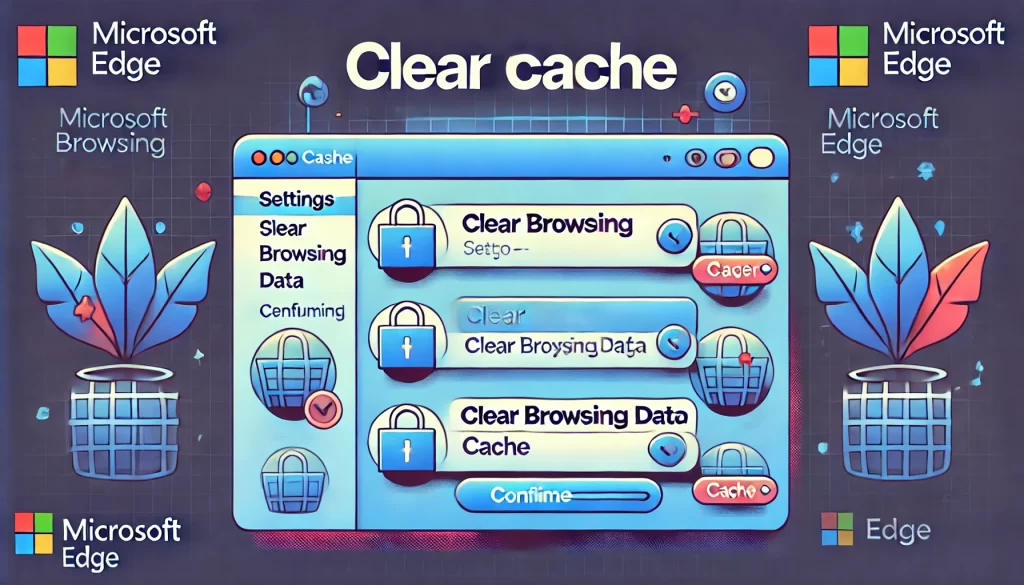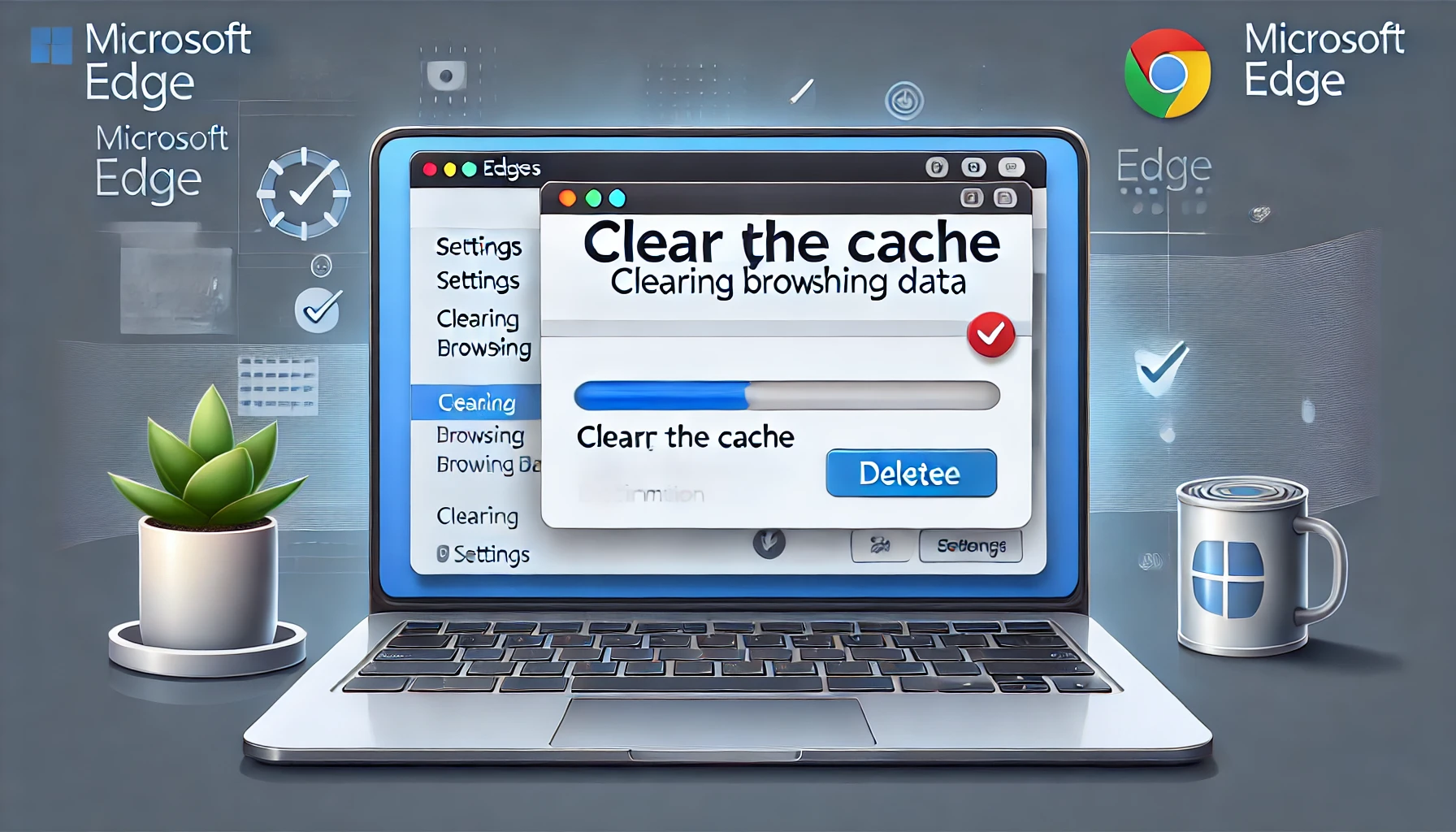Introduction to Microsoft Edge Cache Management
Microsoft Edge has become a popular browser choice, offering fast performance and modern features. Cache management plays a significant role in maintaining browser efficiency. Properly managing the cache ensures a smooth browsing experience, avoids issues with outdated content, and improves website load times. This guide provides detailed steps for managing cache in Edge, troubleshooting problems, and exploring advanced cache-related features.

Step-by-Step Guides
Managing the cache in Microsoft Edge is straightforward. Here’s how you can do it step by step:
Suggested Posts:
• Caching Concepts and Best Practices
• The Ultimate Guide to Browser Caching
• Advanced Cache Management Tools
How to Clear Cache in Microsoft Edge
- Open Microsoft Edge.
- Click on the three-dot menu in the upper-right corner.
- Select Settings > Privacy, search, and services.
- Scroll to the Clear browsing data section and click Choose what to clear.
- Check Cached images and files.
- Click Clear now to delete the cache.
This method clears all cached files, helping to free up storage and improve browser performance.
Shortcut to Clear Cache in Microsoft Edge
Edge offers a quicker way to clear cache using keyboard shortcuts:
- Press Ctrl + Shift + Delete on Windows or Command + Shift + Delete on Mac.
- A window will appear with options to clear browsing data.
- Check Cached images and files, then click Clear now.
This method is faster and ideal for frequent cache clearing.

Clearing Cache for Specific Sites in Edge
If you want to clear the cache for a specific website, follow these steps:
- Open Edge and visit the site whose cache you want to clear.
- Click on the lock icon in the address bar.
- Select Site Permissions.
- Scroll to Clear data and click Reset permissions.
This option removes cached data for the selected website without affecting other sites.
Suggested Posts:
• Microsoft Edge Cache Management
• Firefox Cache Management
• Opera GX and Opera Cache Management
Troubleshooting and FAQs
Despite its ease of use, some users encounter issues while managing the cache in Microsoft Edge. Here’s how to address them:
Why Can’t I Clear My Cache in Edge?
If you cannot clear the cache, try the following:
- Restart Edge and attempt the process again.
- Ensure Edge is up to date by checking for updates under Settings > About Microsoft Edge.
- Disable extensions, as some may interfere with cache clearing.
How to Reset Cache in Microsoft Edge
Resetting the cache can fix persistent browser issues:
- Open Edge and navigate to Settings.
- Under Reset settings, click Restore settings to their default values.
- Confirm the action to reset all cached data.
This method is helpful when clearing the cache alone does not resolve issues.
Advanced Topics
For advanced users, managing cache in Edge extends beyond clearing temporary files.
How to Clear Cache and Cookies in Edge
Cache and cookies often work together to enhance the browsing experience. To clear both:
- Open Edge and go to Settings > Privacy, search, and services.
- Under Clear browsing data, select Choose what to clear.
- Check Cached images and files Cookies and other site data.
- Click Clear now.
This process ensures the complete removal of temporary files and cookies.
Edge Browser Cache: Common Issues and Fixes
Issue 1: Websites Not Loading Properly
- Clear the cache using the steps outlined above.
- Restart the browser and try reloading the page.
Issue 2: Browser Slowness
- Disable unused extensions to reduce load times.
- Consider clearing cookies along with the cache for better performance.
Issue 3: Cache Keeps Resetting
- Check if you have enabled automatic cache clearing under Settings > Privacy, search, and Services.
- Disable this feature if you want to retain cached data.
Related FAQs
How often should I clear the cache in Microsoft Edge?
- Clearing the cache once a month or when facing issues is sufficient.
Does clearing the cache in Edge delete passwords?
- No, cached files are different from saved passwords. Clearing the cache does not affect your passwords.
Why does Edge save cache?
- Edge uses cache to speed up website loading by storing static resources like images and scripts locally.
Can I automate cache clearing in Microsoft Edge?
- Yes, enable Clear browsing data on exit under Settings > Privacy, search, and services.
Is it safe to clear the cache in Edge?
- Yes, clearing the cache is a standard maintenance practice and poses no security risk.
What is the difference between cache and cookies?
- Cache stores website resources like images, while cookies save user preferences and session data.
Key Takeaways
Microsoft Edge cache management is essential for maintaining browser efficiency and resolving common issues. By clearing cached files, troubleshooting problems, and exploring advanced options, you can optimize your browsing experience. The steps outlined in this guide ensure you can handle cache-related tasks with ease.
- Cache management in Microsoft Edge improves website load times and browser performance.
- Use built-in tools and shortcuts for quick and effective cache clearing.
- Clearing cache for specific sites is possible without affecting other data.
- Regular maintenance helps avoid common browser issues.
